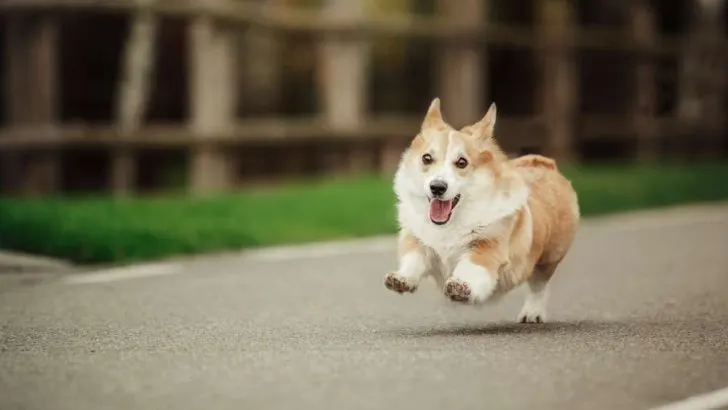A shocking 56 percent of dogs in the US are considered overweight; that is a scary statistic.
Somewhere along the way, we forgot that a dog’s primary function wasn’t always to be cute and shower you with love.
The descendants of wolves actually had some significant roles to play. Hunting, herding, guarding, and many more were activities dogs were once used for almost exclusively.
They’re still used for that today, but noticeably less than before, and instead, a lot of dogs just sit around at home, waiting for their afternoon walk and their owner to come back from work. Some of them are even limited to a small apartment where any kind of movement is painfully restricted.
That brings us to the star of today’s show, the Welsh Corgi. This cute fellow who owns its popularity to the queen of England is surprisingly one of the most active dogs you can find.
Once upon a time, Welsh Corgis were used to herd cattle and watchdogs.
Nowadays, they’re just household pets and faithful companions.
With the shift of occupations comes the need to make sure our furry Corgi companions get plenty of exercises and mental stimulation. This is because they were bred to have great physical stamina and intense mental concentration for their work.
Do corgis need a lot of exercise?
Welsh corgis need plenty of exercise in order to burn calories, stimulate their minds, keep healthy, and avoid boredom.
Corgis may turn to other more destructive outlets for their pent up stores of energy without something constructive to do, such as chewing and digging. Bored corgis may entertain themselves by barking and howling.
This article aims to cover a lot of things concerning corgis and the importance that a good workout has for their overall wellbeing.
The Importance Of A Good Dog Workout
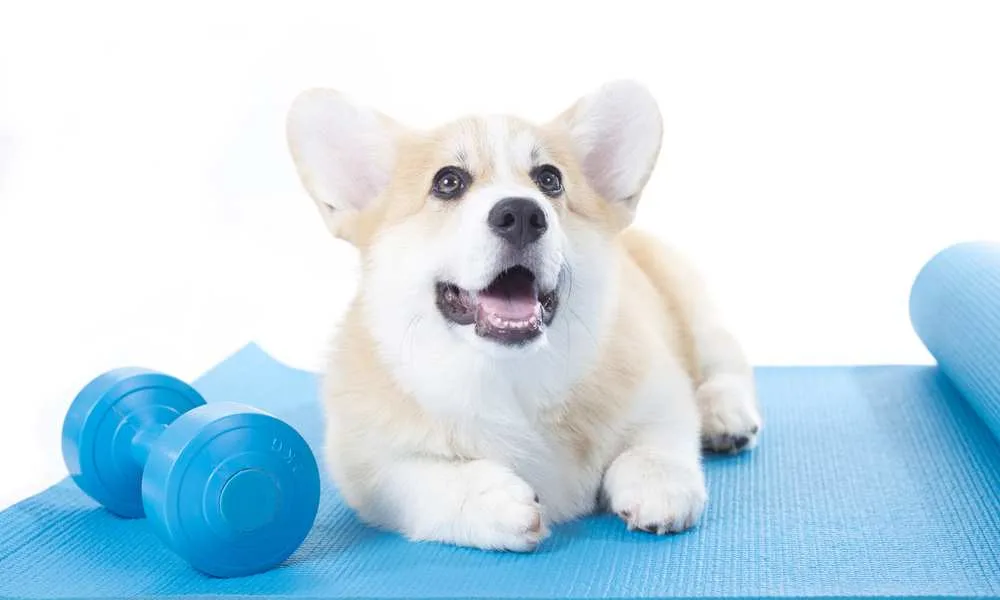
Physically
Corgis are a small but sturdy bunch.
Although they’re short, they’re quite strong and, as we said, have an enormous amount of stamina.
Keep in mind; these dogs had to run around to herd cattle and sheep their entire lives.
It’s almost impossible to tire them out just by walking around the block a few times. This means they crave for activity, especially corgis that are still in their prime.
But one of the main reasons corgis need regular exercise is because of their tendency to get fat. Corgis are not good at self-control when it comes to food.
They’ll inhale an entire meal in seconds, and owners who do not watch their corgi’s weight can cause some severe health problems in the long run.
The internet is partly to blame here. There are lots of videos on Youtube where a chubby corgi is doing something funny or just looking funny as they walk. But that is not how a corgi is supposed to look.
These dogs are low to the ground and have a long, agile body; they were used for herding after all. If they’re carrying too much weight, they’re putting a lot of stress on their body.
Corgis are known to develop hip dysplasia and intervertebral disc disease. These are severe health conditions that can make your corgi’s life a living hell.
But besides those conditions, extra weight on any dog can put unnecessary stress on their vital organs like the heart and lungs.

Mentally
Corgis can be a handful. If you’re thinking about getting a corgi, you better be willing to spend time on some daily activities that will tire it out, both mentally and physically. Corgis can be a naughty bunch.
If they don’t have anything to do and an excess of energy, they’ll find a project on their own.
They’ll start digging holes, rip apart a couch, or just find a way to bolt somewhere for a while. All in all, you shouldn’t expect them to be couch potatoes. If they do become that, they might develop some health conditions since their physiology requires them to be active.
Also, corgis love to spend time around people. Suppose they’re left alone for a long time every day. In that case, they can become super anxious, and problems might arise that go beyond just ripping apart a few pillows.
Corgis tend to be very loud when communicating their displeasure. If you live in a building, expect a few unpleasant looks from your neighbors. So you better start clearing out your schedule for a corgi if you still plan on getting one.
That’s why we’ll include mental exercises as well. A good mental exercise can tire out a corgi just as much as a good run or a walk. They’re highly intelligent dogs, and they definitely require more than just physical exertion.

How Much Exercise Do Corgis Need?
There’s a big difference between a small puppy and a full-grown dog.
There’s no need to make them go through any strenuous activities as they’re still in development and don’t have the required energy. Plus, if you start pushing your pup too hard too early, you might harm their development.
So it’s best to wait for their growth plates to close, which is when they’re around one year of age. Wait for them to develop properly before beginning any particularly challenging activity that includes a lot of running and sprinting.
As they grow older, you can slowly increase the amount of their daily activity.
How long does a corgi need to be walked? How often do corgis need to be walked?
A good rule to follow when it comes to exercising a puppy is “5 minutes of exercise for every month of their age.” A 6 months old puppy should be able to walk for around half an hour.
You should always look at their behavior and make sure you’re not tiring them out completely. If you see any signs of panting or slowing down, you should end the walk right there and then; they’re just not ready for that much activity yet.
An adult corgi is another story. An hour a day should be a minimum. Don’t worry; you’re not going to tire them out, at least not quickly. Walking a mile or two a day isn’t going to cut it, though.
Corgis can walk for days; it’s in their DNA. What you should do is implement some more challenging exercises in their daily routine. This can even save you some time.
If you find an exercise that your corgi likes and it tires them out quickly, without hurting them, of course, you might not have to spend hours walking your corgi around town. Plus, if the routine is a lot of fun for both of you, you’ll be strengthening your bond, and your little corgi will love you even more.
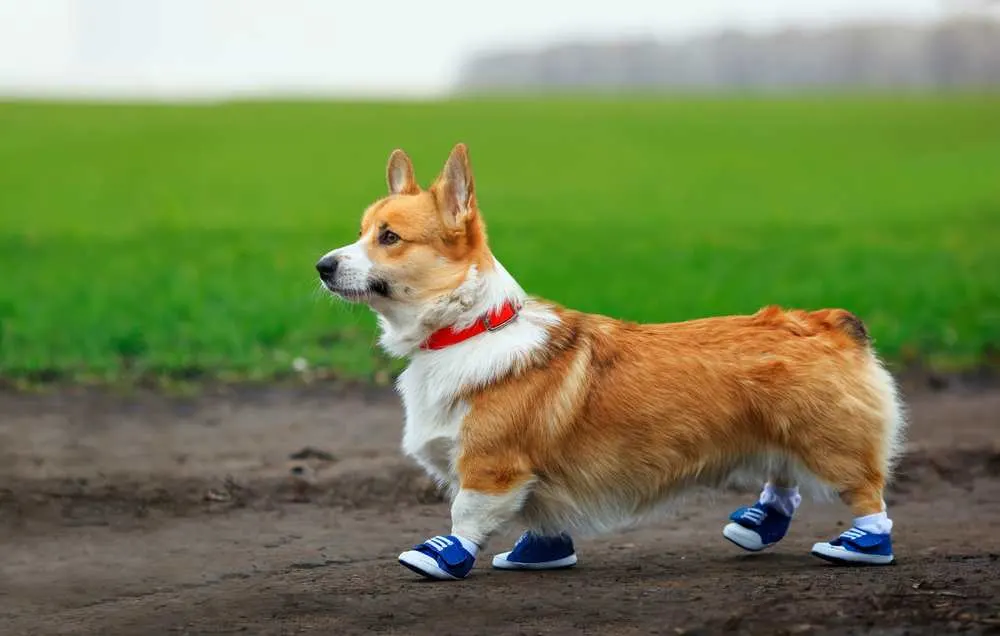
Best Exercises and Activities For Corgis
First, we’ll go over the physical exercises and later we’ll give you a few mental exercises as well. It’s best that you implement both of these into your corgi’s workout routine as they both provide the necessary stimulation your corgi needs.
Physical Exercises
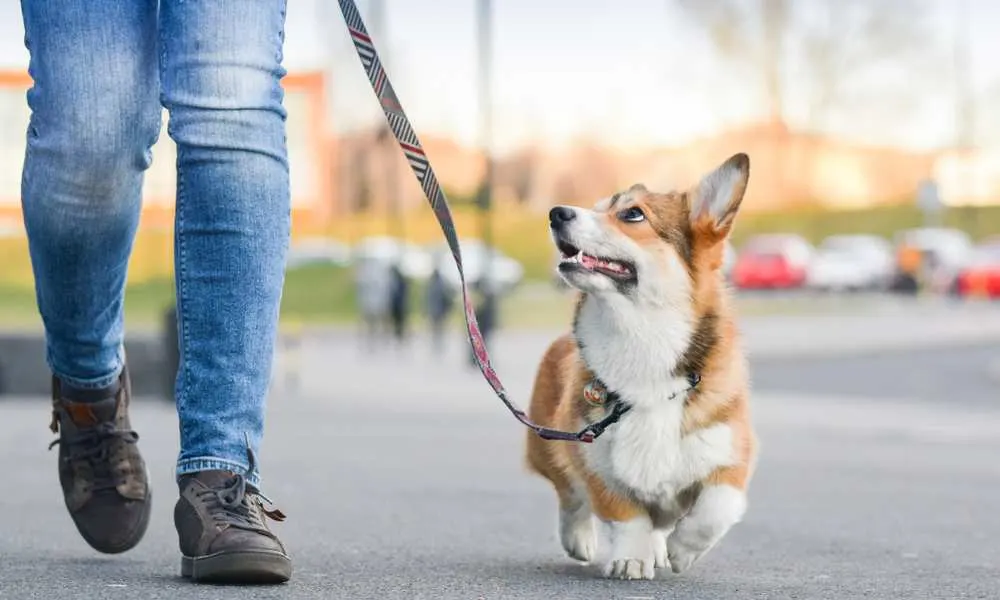
Walking
We did say that walks aren’t going to cut it for a full-grown corgi; this doesn’t mean you should stop walking your dog and just let them do high-intensity exercises from the get-go.
How much walking do corgis need?
Walking is an excellent warm-up for dogs, and you should never skip it. Whatever the exercise plan you choose for your corgi, it should always start with a walk. This will improve the blood flow to their muscles and tendons and significantly reduce their risk of injury.
Just like you would warm-up at the gym, so you don’t hurt yourself, the same goes for your corgi.
But besides just warming up, walking is an excellent mental activity as well. We’ll go over this in a lot more depth in our mental exercises section. For now, just keep in mind that walks are here to stay.

Hiking
Hiking is a lot less available daily compared to walking, but definitely more effective. Corgis are big explorers; if you bring them to an entirely new spot, they’ll start sniffing, looking, and using all their senses to properly discover that spot.
Hiking can make that happen. Humans love mountains, but for a dog, they represent a massive step up from the usual everyday life. Rougher terrain will provide a tremendous challenge for a corgi. Climbing rocks and treading through thick forests are all things your corgi will enjoy.
Plus the number of new smells and just pure sensations that a good hike can provide, and your dog will be all over the moon.

Swimming
If your corgi likes water, swimming is a great all-around exercise. Swimming will develop all the major muscle groups – don’t worry, your corgi isn’t going to get jacked.
The great benefit of swimming is that it’s great for joints. We said that corgis are prone to developing back and joint issues, and swimming can do wonders to prevent that.
Swimming will prepare your dog for other, more strenuous, activities. Veterinarians often recommend swimming for dogs that have had any kind of bone condition as it is an excellent rehabilitation exercise.
We recommend including this one in a weekly exercise routine. Read More: Do Corgis Float In Water?
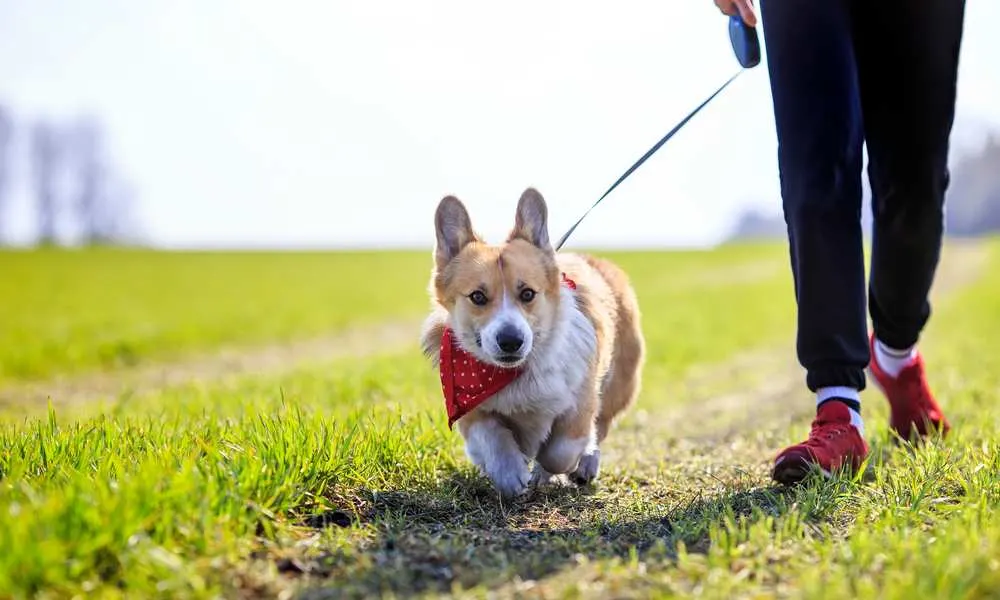
Jogging
One thing we’re all missing is enough time to do everything we want in 24 hours. Devoting one whole hour to our dog can seem like a lot if we have six other things we have to do. However, merging some of those activities can let you have your cake and eat it too.
Jogging is an excellent joint activity that will get both you and your corgi in shape. It will provide enough exercise for both of you, and you’ll spend some quality time together.
Corgis can prove to be awesome running partners. Buying a hands-free leash is highly recommended, though, as it will make your runs a lot more comfortable.
We advise you to warm up first and start with a walk that will get blood pumping both in you and your corgi.
Keep in mind; corgis can have vulnerable joints, and getting too intense right away is not the way to go.
If you’re just starting this activity, don’t go on a 10k run right away, as this can get you or your dog injured. Increase the distance by a few hundred feet every week or so, and both of you should be good and healthy.
An alternative to this is a treadmill. If you don’t need one for yourself, you can get one that’s tailored to dogs. They tend to be cheaper.
This is especially useful if you live in an apartment and the weather conditions aren’t favorable for any outside activity.
Now we come to some of the best games for corgis:
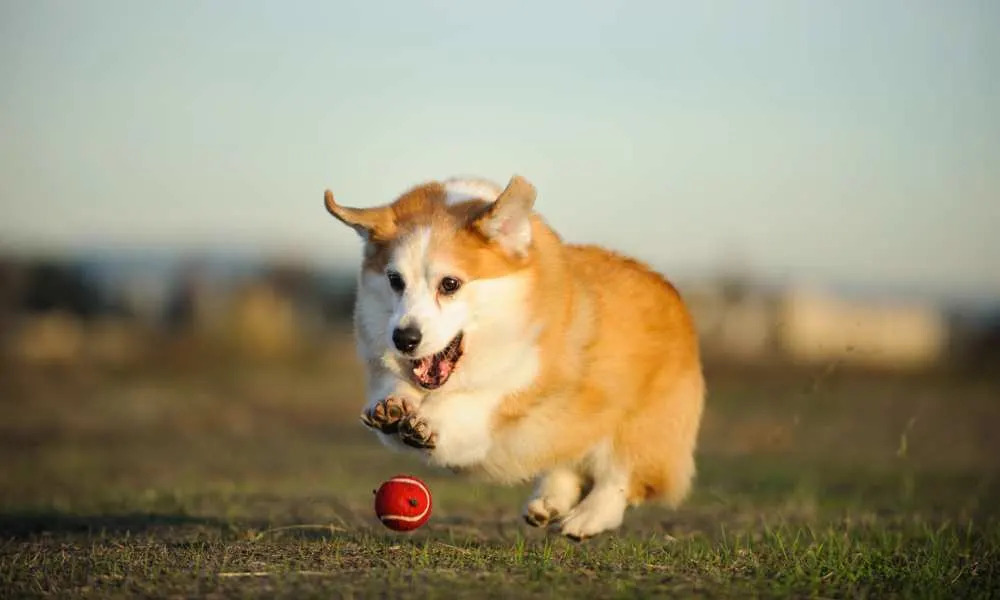
Fetch
The classic fetch, an activity that doesn’t require you to do much, and yet your dog gets a great workout out of it.
Corgis are not easy to tire out, but a brisk walk followed by a fetch session can satisfy your corgi’s physical activity needs.
One thing to keep in mind, though, some corgis can be clever; they refuse to play fetch unless adequately bribed. Petting and giving treats is an excellent way to motivate them, don’t go nuts on the treats, though.
Otherwise, all the activities they have will be pointless.

Tug Of War
Since it doesn’t require too much space, a tug of war can be an excellent activity for your corgi to burn some calories indoors.
Depending on how hard you go, the tug can become intense, and that might be precisely what your corgi needs.
Like swimming, it can really work the back and leg muscles. Be careful, though, because, unlike swimming, the tug can injure your dog.
Restrain from any explosive movement and yanking since it can hurt your dog’s neck or teeth. Gentle pulls should be more than enough.
Corgis can be feisty so training your dog to know when they should drop the toy is a good countermeasure to prevent injury.

Herding Ball
Two options here.
The first one, and the one that requires a lot less activity from you, is a herding ball. These things are great for breeds that have herding in their DNA.
Herding balls are made to be mostly indestructible. They’re too heavy and cumbersome for your dog to pick up with his teeth; they don’t bounce and are designed to be rolled around. Your corgi will be thrilled just to push it around and chase it—a few things to keep in mind, though.
A lot of the owners reported that their dogs, corgis especially, tend to bark a lot while playing with the herding ball, don’t worry, they’re just doing what’s in their DNA, barking at the livestock that they’re herding.
Another thing to keep in mind is that if you have flowers in the yard, the dog might mow down all your hard work. So a park will probably be a good alternative.
Another option is a soccer ball.
This one requires you to participate in the play more than the herding ball does. However, it does mean you’re playing with your corgi instead of letting him do everything all on his own.
Dribble the ball and make your corgi work for the ball a bit, and it’ll be a blast.
Keep in mind; soccer balls are a lot less sturdy compared to herding balls. They get torn very quickly when the dog starts sinking its teeth into them.
We would recommend both of these options if you can manage it. If you’re not in the condition to play soccer with your dog, it’s okay, get a herding ball and let him play outside; just keep in mind, he might bark a lot, and he might ruin your garden if you’re not careful.
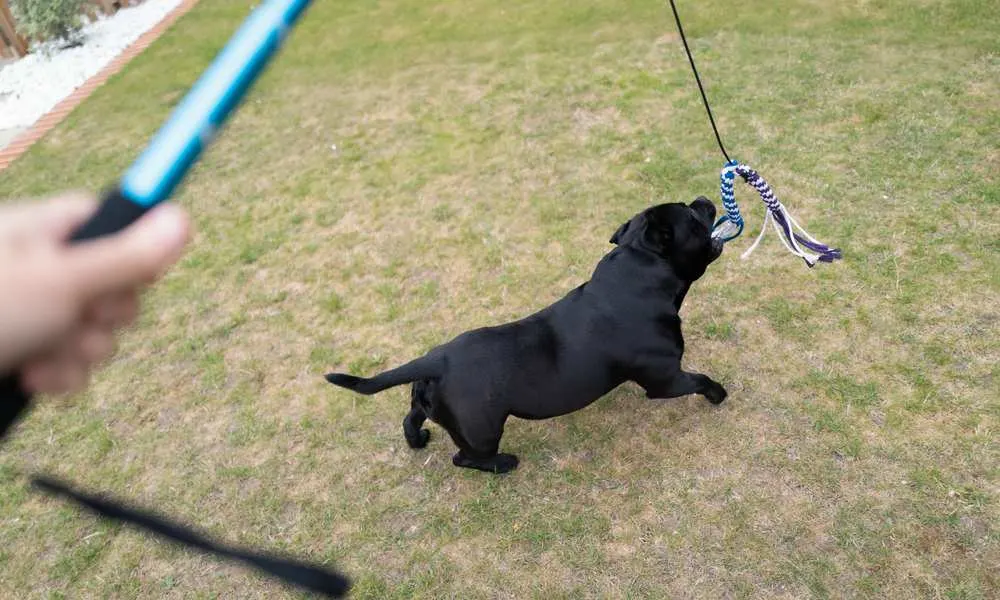
Flirt Pole
Relatively simple and yet so effective. The reports from owners that bought a flirt pole are overwhelmingly positive.
This thing is a mix of tug of war and a fetch ball.
It’s a pole with a rubber rope that has a toy attached at the end. Suffice to say; dogs are crazy over it.
Also, it’s an excellent toy for practicing impulse control. Here are some of the activities you can try:
- Chase: have your corgi chase the toy, make him work for it; a tired dog is a happy dog.
- Self-control: This one implies you’ve taught your dog some commands already, primarily when to sit and when to drop it. Tell your corgi to sit and place the flirt pole in front of him so he can see, then tell him not to touch it. Take a few steps back and wait for a second, then tell him to go for it.
- Self-control 2: This one will take a bit of practice, but it’s fairly similar to the first one, just a few levels harder. It requires a bigger space, like a yard or a park. Like in the previous one, have your dog sit but take the flirt pole with you this time. Then walk to the other side of the yard or the park, and then tell him to come after it. It’s a great way to train your dog to listen and adequately award him for it.
There are a few things to know about the pole.
Some dogs love it too much. Quite a few owners said they have to hide the toy outside of the house because otherwise, their dog wouldn’t rest until it finds it.
Also, the cord is rubber and can be stretched. If you’re not careful, it can launch right at your face or the other way around; the pole might hit your dog. So be careful.
All in all, the flirt pole is definitely one of the best ways to give your corgi a decent exercise.
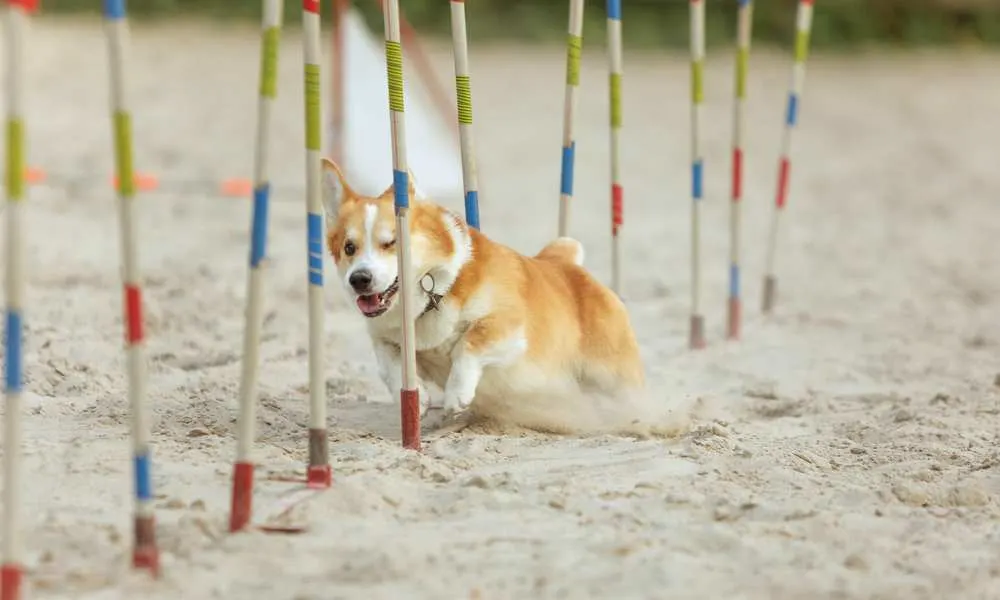
Sporting Events
If you have the time for it, training a corgi can be a fantastic experience. As we said, they’re very intelligent and quite agile. They will dominate things like lure coursing and herding.
It’s best to check out all the sporting events near you and choose the one best suited for your corgi.
This might be the best possible way to bond with your corgi since you’ll be a team trying to win, and corgis just love winning.
Don’t go too hard from the start, though. Slowly work your way up, and be mindful of your corgi’s physical state. Having a vet check him out before you enroll in an event is highly recommended.
If there isn’t a sporting event in your city, creating one of your own, just for you and your dog, shouldn’t be that hard to do; we can guarantee your corgi will love it.
Learn More: Are Corgis Good City Dogs?
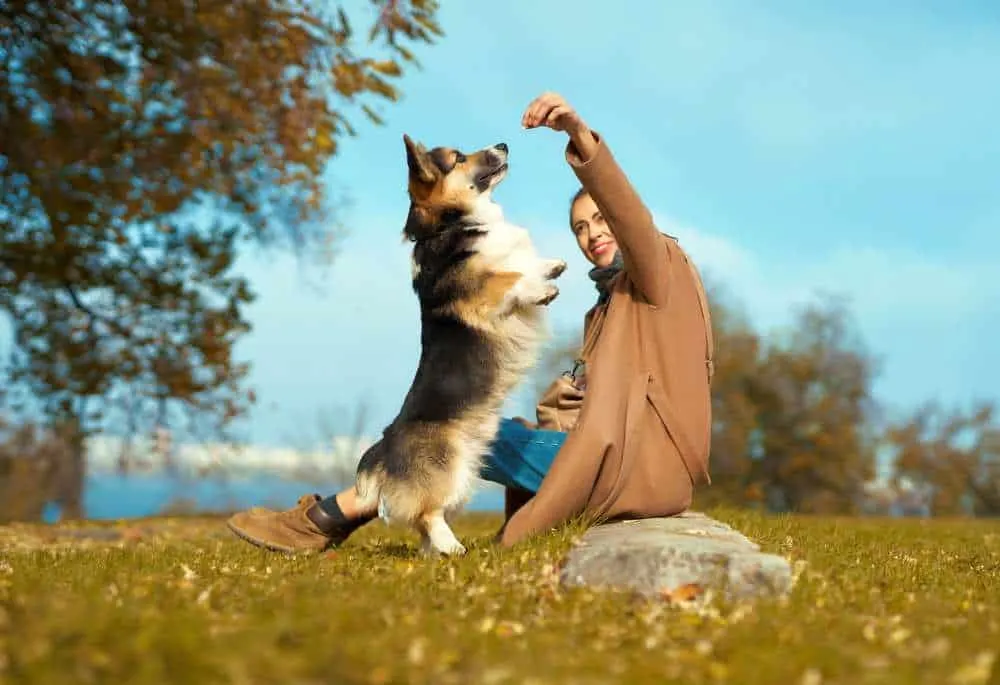
Mental Stimulation Activities
Now that we’ve covered physical activities, it’s time for a few mental activities. These can tire out your dog just as much if not more than the physical activities.
Adding these into your corgi’s workout routine shouldn’t be too hard, as some of these require almost no engagement on your part.
However, let’s start with the one that you can implement fairly quickly, and you might be doing it already.
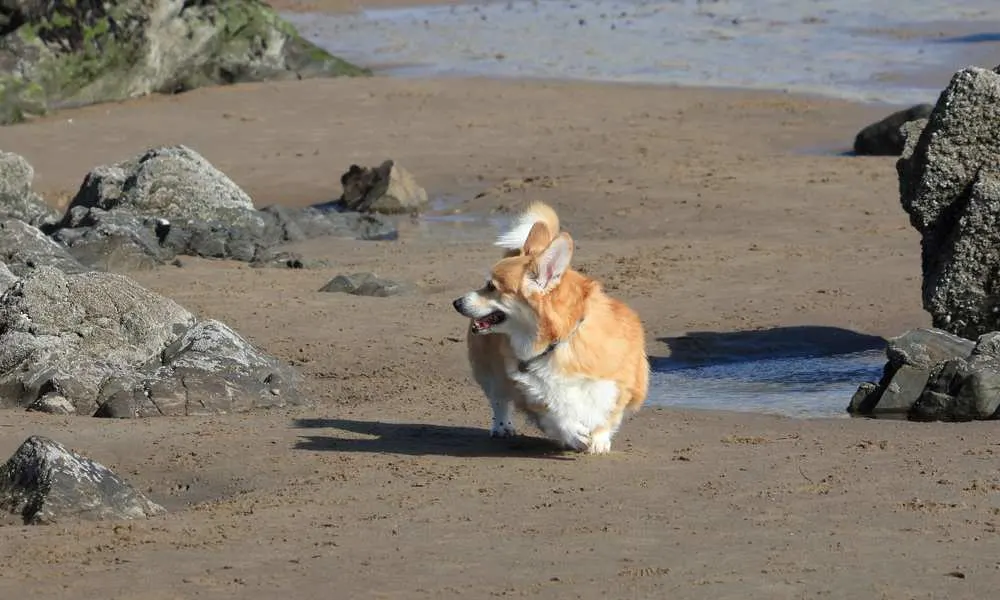
Exploration Walks
Corgis are intelligent dogs, and they require some serious mental stimulation. Next time you take your corgi out for a walk, let him sniff and explore a little more than usual. Dogs love discovering new smells and sensations.
On the flip side, though, corgis can be very bossy. If you let your corgi dictate the pace of the walk and just about everything else, you might have trouble reigning in your corgi.
A good solution to this is to teach him a cue that allows him to go sniff. Find a few places around town where you think he’ll want to go sniffing about and just take him there every so often.

Teach Your Corgi A Few Tricks
First, the basics: stay, come here, drop it, and lay down. These are highly recommended as they will make your life a lot easier in the long run.
As we said, corgis tend to be bossy, which can be cute most of the time. But sometimes, you don’t want your dog herding and biting your new guests.
These exercises will teach your corgi to behave and improve his self-control.
After you’ve covered the basics, you can go onto some more complex things. Teach them the names of household items, have a bell on your doorknob so the dog can tell you when it wants to go outside.
Have them jump through hoops, speak, high five, shake hands. There are tons of neat tricks you can try.
This is also a great bonding opportunity as you will spend some quality time together.
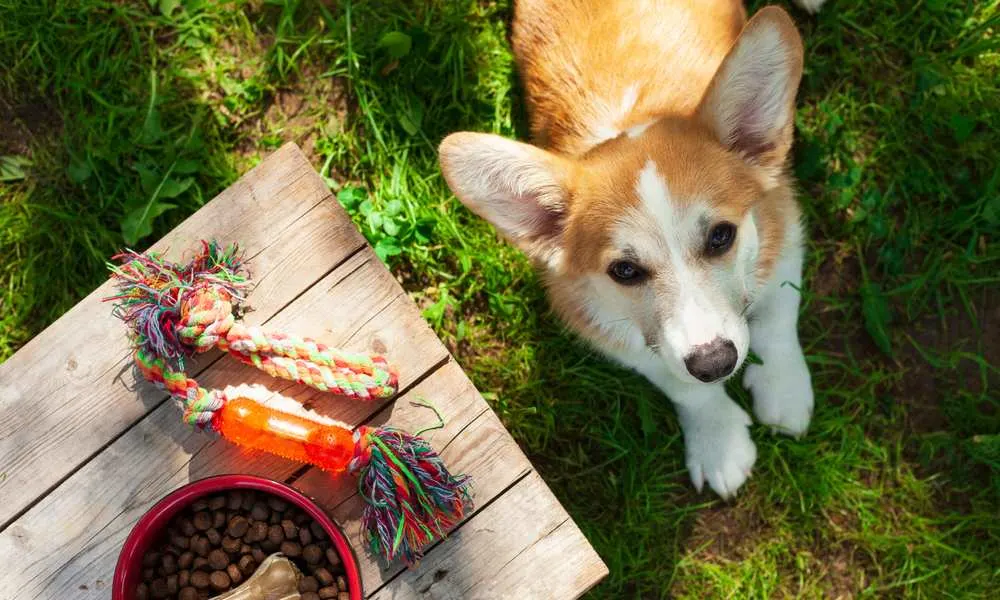
No Free Meal
In the past, when their primary function was herding, corgis had to earn their meal.
Nowadays, we just pour some food in their bowl and let them have it. But what if we can make that process a lot more interesting.
Buying a food dispenser can help you in tiring out your high energy corgi without having to do much.
Just put a dog treat in the dispenser and watch your dog figure out a way to open it. In the beginning, they might have a hard time, but letting them struggle a bit is completely fine.
After a while, your corgi will probably get used to the way the dispenser functions, so buying a new one with a different mechanism would be a good idea to keep things interesting.

Smart Toys
Getting your corgi a toy that isn’t just for fetching or tugging is one of the smartest moves you can make. Just like us, dogs need some purpose in their life, and corgis especially.
For centuries, their primary purpose was herding. But instead of buying a fleet of sheep, a challenging interactive toy should be an acceptable replacement.
We already mentioned the food dispenser, that’s just a great toy all around, and if you start with that, you shouldn’t have to worry about getting a new one for a while.
That being said, when you do decide to buy a new one, Amazon has a bunch of interactive dog toys that you can look into. From snuffle mats and squeaky puzzle plush toys to chew and suction toys if your corgi turns out to be a chewer.
The options are endless, but we recommend reading the user comments before buying a toy, as it doesn’t necessarily mean it will interest your corgi.
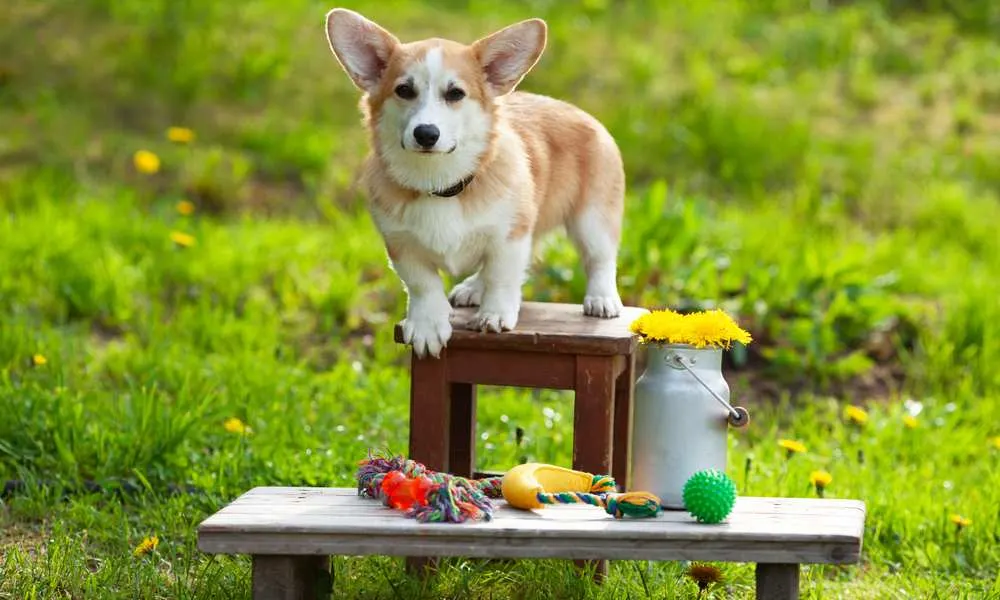
Even Toys Have Names
Since we’re talking about toys, we might as well mention another great option, teaching your corgi the name of its toys. Before we go on, this one doesn’t require any puzzles or food dispensers, as your corgi probably won’t be able to carry those.
This does mean your corgi has already played the find it game, where you hide things around the house and have your dog search for them.
Toys might not be the best option to start this game, so we recommend starting with a food item with a more pungent smell and then working your way up from there.
We assume your dog already has some toys they like to play with, plush toys that they can chew, or even a tennis ball.
You can hide these around the house and have your dog bring them to you. Don’t go too crazy on the hiding, though. Otherwise, they might start wreaking havoc in your closet.
First things first, teach your corgi the name of their toy. Put that toy next to your corgi and start saying the toy’s name; when they touch the toy, reward them, give them a good snuggle or a treat.
Please don’t go crazy on the treats though, corgis can get overweight, and as we said at the beginning of the article, that is definitely not something you want.
After your dog has learned the name of the toy, put it in another room, tell them the name of the toy, and let them bring it to you. Always reward them when they do.

Shell Game
All you need is three cups and a treat. Put the treat under one of the cups and shuffle them around; let your corgi choose the cup and see if he gets it.
This is really simple and yet effective. Your corgi will have to think a little and work for his treat, plus it’s enjoyable for both the owner and the dog. It’ll make you feel like a magician.

Obstacle Course
Remember, when we mentioned the sporting events in our physical activities category. Well, this can be considered a home-made sporting event.
First, teach your corgi to jump over obstacles and weave around poles, then build an obstacle course where he’ll have to do all those things one after the other.
This is an excellent combination of physical and mental exercises.
You don’t need to spend a lot of money to do it; you might already have most of the things at home. A few poles and a hoop made out of rope is a good way to start.
This one does require a bit of space, but if you have a yard, it’s so worth it.
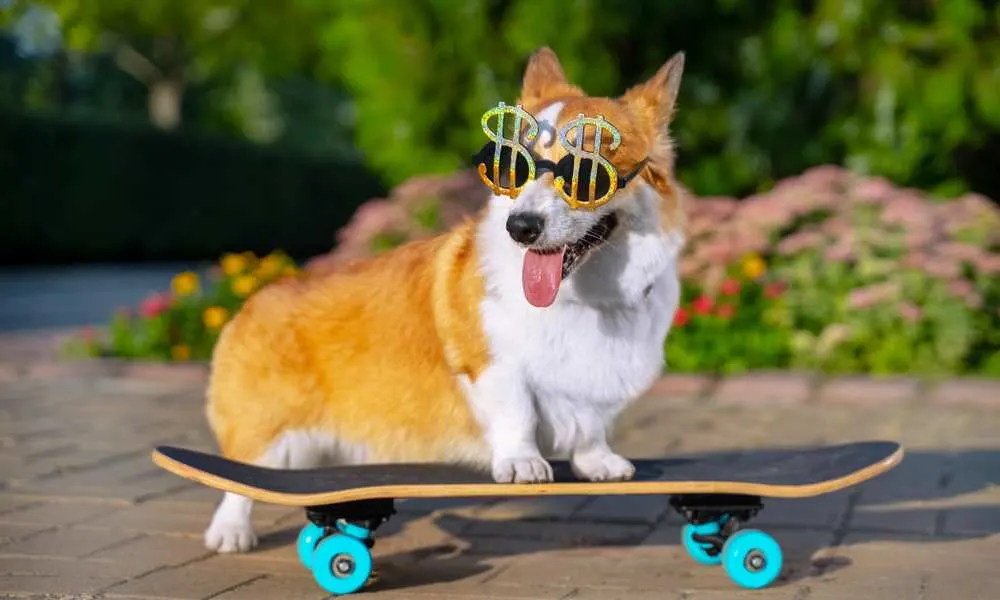
Free Shaping
This one does require a bit of time on your part, but it’s a great way to challenge your corgi.
As we said, corgis can be a handful sometimes. They tend to be bossy and are full of energy. Free shaping is an excellent way to reel in their bossy nature and let them think for themselves.
Free shaping is a type of training where you’re not using any visual clues but instead a clicker and a treat to teach your dog a more challenging behavior.
Dog trainers often use free shaping as it has been proven to be one of the most effective methods for getting a dog to do the wanted behavior.
The more things you teach them, the more difficult it becomes for them to know what you exactly want.
Your dog will repeat a lot of behaviors they’ve previously learned before getting to the one you want. This will make your corgi exercise its memory and even muscles depending on what you’ve taught them.

Things To Consider
To make things easier on you will give you a plan on how your corgi’s workout week can look like.
You are entirely free to change up whatever you want. This is definitely not set in stone.
Before we give you the plan, though, we like to mention a few things about corgi weight and how a corgi should look.
Don’t worry; this won’t turn into an article about weight. We’ll just mention a few things to be aware of before putting your corgi on an exercise plan.
How To Feed Them And How They Should Look
If your dog is overweight, the first thing you should do is regulate its diet.
Forget about any fancy exercises; stick to slow walks for a while until they shed the excess weight. Otherwise, they might develop a hip or a joint injury as their joints are just not supposed to carry around that much weight, especially when jumping or sprinting.
What you can do is introduce some of the mental exercises we mentioned. The food dispenser one would be great for a corgi that’s carrying some extra weight.
Try to refrain from using treats as a reward. In the long run, you might be making two steps forward if you regulate his diet but three steps back if you continue giving him treats.
Before we go on, we’ll give you a picture to see how an unhealthy corgi looks, and then we’ll put a picture of a healthy one as well.

As you can see, this corgi is worryingly obese. For some reason, we’ve started to associate corgis with being plush and “curvy,” but they really shouldn’t be.
Do a bit of research to see if your corgi is on the smaller, medium, or larger side. Check how much it weighs, and then go from there.
Not all corgis are created the same, but all of them deserve to lead a healthy life.
Corgis like to eat a lot, and if you’re not careful, a corgi could quickly become overweight.
One of the best ways to check if your corgi is overweight is to feel its rib cage. If it’s almost impossible due to all the fat your corgi has, that means he/she is overweight.
If you can easily feel out the ribs, they feel sharp to the touch, and it’s easy to see them, that means your corgi is underweight.

This is a picture of a healthy corgi. This one is on the smaller side, but it works as a great example.
One good visual cue is the abdominal tuck beneath the rib cage, just like the one the corgi in the picture has. If your corgi has no abdominal tuck, then, again, it’s probably overweight.
A Workout Weekly Plan For Your Corgi
| Monday | Tuesday | Wednesday | Thursday | Friday | Saturday | Sunday | |
|---|---|---|---|---|---|---|---|
| Morning | Walk or fetch | Exploratory walk (let them smell everything) | Fetch | Walk | Exploratory walk | Hiking | Swimming |
| Afternoon | Dog puzzle | Soccer ball or a herding ball | Dog puzzle | Soccer ball or a herding ball | Sporting event or an obstacle course | ||
| Evening | Fetch | Trick learning or exercising a trick | Flirt pole | Trick learning or exercising a trick | Flirt pole | Learning new a trick | Exercising the trick |
If you’re at work and can’t manage to play with your dog three times a day, it’s fine if you do it in the morning and the evening.
We definitely recommend doing it at least once a day, as corgis tend to become problematic if no one’s paying attention to them and if they don’t have anything to do.
The blank spaces in the table are there as rest periods, both for you and your dog.
Make sure to properly warm-up your corgi before starting any kind of strenuous exercise. A quick walk around the block before starting to play with the flirt pole or the obstacle course should be a must. It will help your corgi warm up its joints and decrease the risk of injury.

Final Thoughts
We’ve covered a lot in this article. Let’s just sum it all up before giving you our final thoughts.
We’ve included both physical and mental exercises since they’ll save you a ton of time and provide your corgi with the necessary stimulation.
Once again, some preparation and research before starting these exercises are highly recommended.
Puppies shouldn’t be forced to do any strenuous activities. Letting them play with other dogs should be more than enough in the beginning, while you wait for them to develop properly.
Make sure your corgi isn’t overweight. If it is, stick to walks and regulate its diet. Implement some of the mental exercises we’ve mentioned and give it some time before its weight goes back to normal.
We mentioned in the beginning that 56 percent of dogs in the US are overweight. That has to change.
Don’t let your dog be a couch potato, and don’t overfeed them.
We get it; corgis can be a handful. But it’s your job to keep them in check and not let them do whatever they want.
These exercises should help you connect with your corgi, and it should make life easier for both of you.

